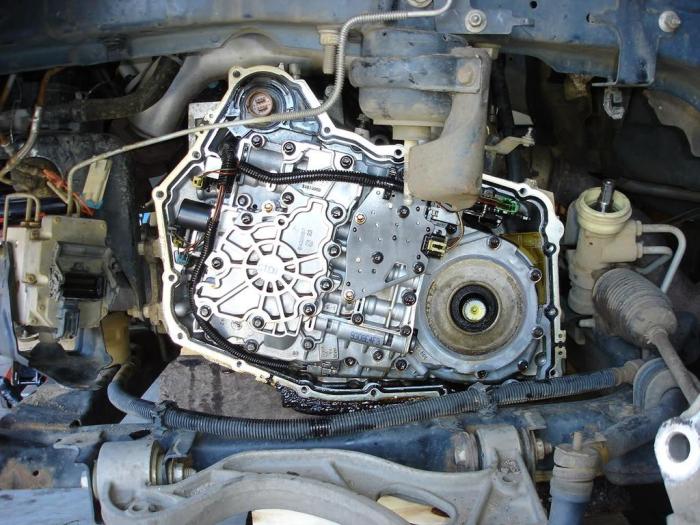Experiencing transmission trouble can be a frustrating and costly ordeal. Understanding the common signs of transmission failure, from subtle slipping to complete gear refusal, is crucial for timely intervention and cost-effective repairs. This guide provides a seven-step process to help you diagnose potential transmission issues in your vehicle, empowering you to make informed decisions about necessary repairs or maintenance.
By systematically checking fluid levels, inspecting for leaks, and utilizing diagnostic tools, you can effectively pinpoint the source of the problem. This will help you avoid unnecessary expenses by accurately identifying whether the issue lies within the transmission itself or stems from related components. Early diagnosis can save you significant money and prevent further damage to your vehicle’s transmission system.
Identifying Transmission Problems

Understanding the symptoms of a failing transmission is crucial for timely diagnosis and repair. Ignoring these signs can lead to more extensive and costly damage. This section will detail common transmission issues, their potential causes, and the severity of their impact on your vehicle’s drivability. Accurate identification is key to avoiding unnecessary repairs and ensuring your vehicle’s safe operation.
Common Transmission Symptoms and Their Causes
The following table summarizes common transmission problems, their potential causes, and the severity of the resulting issues. Early identification can significantly reduce the potential for more serious and costly repairs.
| Symptom | Potential Causes | Severity | Additional Notes |
|---|---|---|---|
| Slipping (loss of power during acceleration) | Low transmission fluid, worn clutch plates, faulty solenoids, internal transmission damage | Moderate to Severe | Can lead to complete transmission failure if ignored. |
| Rough Shifting (jerky or harsh shifts) | Low transmission fluid, worn synchronizers, faulty shift linkage, damaged valve body | Moderate | May indicate wear and tear or fluid contamination. |
| Whining Noises (high-pitched sounds, especially during acceleration or deceleration) | Low transmission fluid, worn bearings, damaged gears, internal leaks | Moderate to Severe | Indicates potential internal damage requiring professional attention. |
| Inability to Shift Gears (transmission stuck in one gear or refuses to shift) | Complete transmission failure, electrical issues (e.g., faulty shift solenoids), low fluid | Severe | Requires immediate professional attention; vehicle may be undriveable. |
Differentiating Transmission Problems from Other Issues
It’s important to note that symptoms often associated with transmission problems can also stem from other mechanical issues. For example, engine problems, such as a failing engine mount or a malfunctioning torque converter (in automatic transmissions), can mimic transmission symptoms. Similarly, problems within the drivetrain, such as a faulty driveshaft or differential, can also produce similar symptoms, leading to misdiagnosis. Careful observation and a systematic approach are necessary to isolate the true source of the problem.
Diagnostic Flowchart for Isolating Transmission Issues
The following flowchart illustrates a systematic approach to diagnosing transmission problems, distinguishing them from other potential mechanical issues. This process helps pinpoint the source of the issue efficiently and avoid unnecessary repairs.
[A descriptive explanation of a flowchart would go here. The flowchart would visually represent a decision-making process. It would start with a general symptom (e.g., loss of power), then branch into questions to differentiate between engine, transmission, and drivetrain problems. Each branch would lead to further questions or a conclusion about the likely source of the problem. For example, a branch might ask “Is the problem consistent across all gears?” A “yes” might lead to a conclusion about engine problems, while a “no” might lead to further questions about specific gear issues, potentially pointing to transmission problems. The final branches would lead to conclusions like “Likely Transmission Problem,” “Likely Engine Problem,” or “Likely Drivetrain Problem.”]
Preliminary Checks and Inspections

Before diving into complex diagnostics, a few simple checks can often pinpoint the source of transmission problems. These preliminary steps are crucial for saving time and potentially avoiding unnecessary repairs. They involve visually inspecting the transmission and checking the condition of the transmission fluid. This initial assessment can significantly inform subsequent diagnostic procedures.
Transmission Fluid Level and Condition Check
Checking the transmission fluid level and condition provides valuable insights into the health of your transmission. Low fluid levels can indicate a leak, while the fluid’s appearance can reveal potential internal problems. The procedure is straightforward but requires attention to detail.
- Locate the dipstick: The transmission dipstick is usually marked with a “Transmission Fluid” label and is often located near the engine. Consult your vehicle’s owner’s manual if you are unsure of its location.
- Check the fluid level: With the engine running and warmed up (to operating temperature), remove the dipstick, wipe it clean, and reinsert it fully. Remove it again and check the fluid level against the markings on the dipstick. The fluid should be within the designated “full” range.
- Assess the fluid’s color: New transmission fluid is typically bright red or pink. Dark brown or black fluid indicates significant wear and potential contamination. A burnt smell often accompanies severely degraded fluid.
- Check the fluid’s consistency: Healthy transmission fluid is generally clear and relatively thin. Cloudy or gritty fluid suggests the presence of contaminants or worn transmission components. A noticeably thick or viscous fluid may indicate the presence of clutch material breakdown.
- Note any unusual smells: A burnt smell is a strong indicator of overheating or internal friction within the transmission. A sweet, almost sugary smell can suggest a coolant leak into the transmission.
Transmission Dipstick and Surrounding Area Inspection
A visual inspection of the transmission dipstick and its surrounding area can reveal potential leaks or damage. This is a quick yet informative step that can prevent further problems.
Inspect the dipstick itself for any signs of damage, such as bends or cracks. Pay close attention to the area around the dipstick tube and the transmission pan for any evidence of fluid leaks. Look for stains, wetness, or drips of transmission fluid. Examine the transmission pan for any dents, cracks, or loose bolts, which could indicate damage or leaks. If any leaks are detected, the source should be identified and addressed promptly.
Tools Needed for Basic Transmission Fluid Check and Visual Inspection
A basic check of the transmission fluid and a visual inspection requires minimal tools. Having these on hand will ensure a smooth and efficient process.
- Clean rags or paper towels
- Gloves (to protect your hands from the fluid)
- Owner’s manual (to locate the dipstick and understand the fluid level markings)
Advanced Diagnostic Techniques

Delving deeper into transmission diagnostics requires utilizing advanced tools and techniques beyond basic visual inspections. Understanding how to interpret diagnostic trouble codes (DTCs) and employing specialized scan tools is crucial for accurately pinpointing the source of transmission problems. This section will guide you through the process of using scan tools and interpreting the information they provide.
Understanding Diagnostic Trouble Codes (DTCs) and Scan Tools
Interpreting Diagnostic Trouble Codes (DTCs)
Retrieving DTCs from the Transmission Control Module (TCM) is a critical step in diagnosing transmission issues. A scan tool connects to the vehicle’s onboard diagnostic port (OBD-II port) and communicates with the TCM to access stored codes. These codes are alphanumeric sequences that represent specific problems detected by the transmission’s internal sensors and control systems. For example, a code like P0730 might indicate a problem with the transmission’s 3rd gear ratio. Interpreting these codes requires referencing a repair manual or online database specific to your vehicle’s make and model. The severity of a DTC can range from a minor issue that may not immediately impact drivability to a serious problem requiring immediate repair. Always consult a repair manual or a qualified technician for accurate interpretation and recommended repairs.
Types of Transmission Scan Tools
Several types of scan tools are available, each offering varying levels of functionality. OBD-II scanners, commonly available at auto parts stores, provide basic diagnostic capabilities, including retrieving DTCs from the TCM. However, their capabilities are often limited to reading generic codes. More specialized transmission scanners offer enhanced functionality, including live data streaming, allowing you to monitor various transmission parameters in real-time, such as line pressure, fluid temperature, and shift timing. These advanced scanners can also perform more in-depth tests and provide more specific diagnostic information, which can greatly aid in troubleshooting complex transmission problems. The choice of scan tool depends on your technical expertise and the complexity of the transmission issue you are trying to diagnose.
Common Diagnostic Trouble Codes (DTCs), Causes, and Troubleshooting
The following table provides examples of common transmission DTCs, their potential causes, and suggested troubleshooting steps. Note that this is not an exhaustive list, and the specific causes and troubleshooting steps may vary depending on the vehicle’s make, model, and year. Always consult a repair manual for your specific vehicle.
| DTC | Likely Cause | Troubleshooting Steps | Potential Severity |
|---|---|---|---|
| P0730 – Incorrect Gear Ratio | Worn clutch packs, low transmission fluid, faulty solenoid | Check transmission fluid level and condition, inspect solenoids, perform pressure tests | High |
| P0733 – Incorrect Gear Ratio (3rd Gear) | Damaged 3rd gear, faulty shift linkage, low fluid | Check fluid level, inspect shift linkage, potentially require internal transmission repair | High |
| P0740 – Torque Converter Clutch Circuit Malfunction | Faulty torque converter clutch solenoid, wiring harness issues, low fluid | Check wiring harness, test solenoid, check fluid level | Medium |
| P0750 – Shift Solenoid A Malfunction | Faulty shift solenoid A, wiring harness issues, low fluid | Check wiring harness, test solenoid, check fluid level | Medium |
Closing Summary

Successfully diagnosing your car’s transmission problems requires a methodical approach combining visual inspection, fluid analysis, and the use of diagnostic tools. While this guide provides a valuable framework, remember that complex transmission issues often necessitate professional attention. By following these steps, you’ll be better equipped to communicate effectively with a mechanic, ensuring accurate diagnosis and efficient repairs. Proactive maintenance and early detection are key to extending the lifespan of your vehicle’s transmission system.